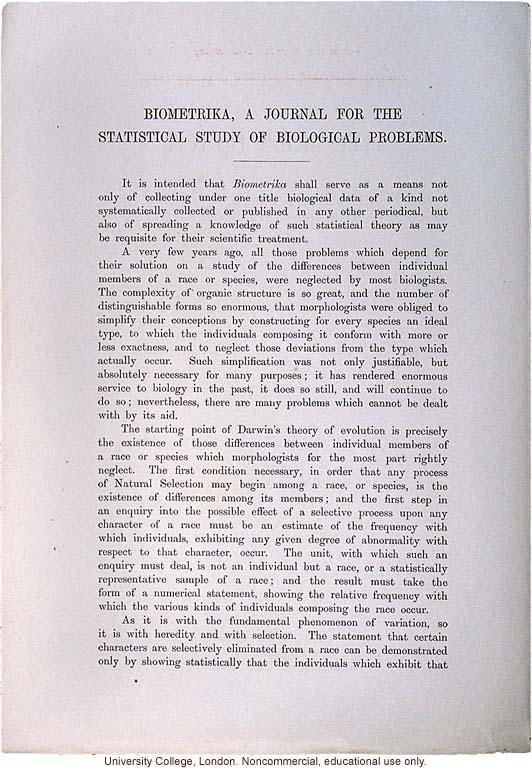Biometrika, A Journal for the
Statistical Study of Biological Problems.
[centered score]
It is intended that [italics]Biometrika[end italics] shall serve as a means not only of collecting under one title biological data of a kind not systematically collected or published in any other periodical, but also of spreading a knowledge of such statistical theory as may be requisite for their scientific treatment.
A very few years ago, all those problems which depend for their solution on a study of the differences between individual members of a race or species, were neglected by most biologists. The complexity of organic structure is so great, and the number of distinguishable forms so enormouls, that morphologists were obliged to simplify their conceptions by constructing for every species an ideal type, to which the individuals composing it conform with more or less exactness, and to neglect those deviations from the type which actually occur. Such simplification was not only justifiable, bu absolutely necessary for many purposes; it has rendered enormous service to biology in the past, it does so still, and will continue to do so; nevertheless, there are many problems which cannot be dealt with by its aid.
The starting point of Darwin's theory of evolution is precisely the existence of those differences between individual members of a race or species which morphologists for the most part rightly neglect. The first condition necessary, in order that any process of Natural Selection may begin among a race, or species, is the existence of differences among its members; and the first step in an enquiry into the possible effect of a selective process upon any character of a race must be an estimate of the frequency with which individuals, exhibiting any given degree of abnormality with respect to that character, occur. The unit, with which such an enquiry must deal, is not an individual but a race; and the result must take the form of a numerical statement, showing the relative frequency with which the various kinds of individuals composing the race occur.
As it is with the fundamental phenomenon of variation, so it is with heredity and with selection. The statement that certain characters are selectively eliminated from a race can be demonstrated only by showing statistically that the individuals which exhibit that
[end]


